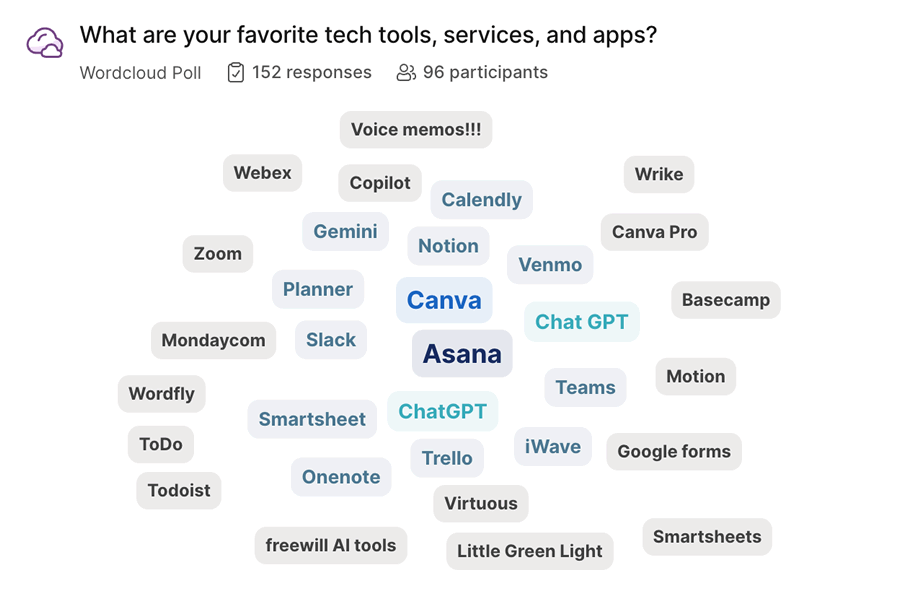
Recently, I gave a keynote called “The Future of Fundraising: Top Trends Impacting Nonprofit Leaders, Today and Tomorrow.” (If you know of an upcoming conference, I’d love to be considered for the keynote.)
You might assume I focused on technology. Of course, technology is an important piece of the future of fundraising, but probably not in the way that you think.
Technology Alters the Method, Not the Intent
In my keynote, I provided several examples of how the purpose of what you’re doing will stay the same, but the methods of how you get there will change. Let’s take communication for example.
Communication as an example
You will always need to communicate with donors. The need for communication won’t change, but the methods you use to communicate will change.
When my parents when to college, there was one phone in the hallway for 40 students and no email. When I went to college, I had a phone in my room, but it was attached to the wall. Email was just starting to become mainstream, but you had to walk up the hill (always uphill) to the computer lab to login and get your messages.
Today’s college kids have their own phones, with instant access to email, in their pockets. However, they rarely use these modern marvels to make phone calls or send emails. Today’s college students prefer text, DM’s, and connecting through social channels. The purpose — communication — has remained the same, but the method has changed.
Technology Provides Efficiency, Improving Your Effectiveness
Today we video chat with donors, which is new in the last five to ten years. In the past, I would have only recommended in-person visits, but that’s no longer the case. Video calling with donors who are geographically distant or simply hard to schedule is a wonderful new method of communication.
At Capital Campaign Pro, we leverage technology to support our clients. We Zoom into meetings with clients (and we were doing this pre-Covid). We set up a virtual and remote consulting company because it’s effective and efficient — simply put, is was the way of the future. Gone are the days where you don’t have access to the best campaign consultants and need to rely on talent being local (or paying hefty fees to fly them in).
You may think email is here to stay, but I’m not so sure. My kids hate email and prefer to communicate with DM’s, texts, and through social channels. Think about phone calls and how they are slowly disappearing too — with everyone screening calls, it’s harder and harder to get through. Similarly, with the constant barrage on our inboxes, we’re going to need to use alternative methods to consistently reach donors.
Fundraising will always depend on relationships
What I am confident about is that the future of fundraising will depend on relationships… possibly even more than today. That’s because we’re inundated with fake news and internet imposters. Future donors will want to be confident that you are who you say you are, and that you are doing what you say you’re doing. Transparent impact reporting will become more important than ever.
Therefore, using technology will be critical for identifying donors with whom to build relationships. It will be imperative for impact reporting. And technology will be instrumental in helping fundraisers save time, plan their work, and generally be efficient and effective.
Tech Tools and Services for Fundraisers
The good news is that you don’t have to be an expert in technology or stay up to date on all the latest available services. You simply need to lean on your peers and your fundraising community to get recommendations about what they are using.
Some favorite tech tools, services, and apps
Here’s a wordcloud of favorite tools and services from my keynote:

The best fundraisers will be open and willing to try new ways of working. I recommend trying one or two new apps or services each year.
A personal example
A few years back, someone recommended Calendly to me and my business partner, Andrea (at Capital Campaign Pro). Andrea was skeptical, because she thought it would reduce our interaction with clients and potential clients (going back and forth with scheduling). I was concerned it wouldn’t really sync with my calendar. But we pushed past our fear and tried it out.
The Result — Calendly has saved me over 100 hours every year (at least two hours per week). It has given us more time for meaningful interactions with clients and prospective clients. And it does sync with my calendar! What would you do with an extra hundred hours per year?
The Future of Fundraising is Bright
So there it is — the future of fundraising:
- Embracing new technology
- Saving time
- Working more effectively
I’ve provided just a few examples in this post. As long as you continue to learn, grow, and try new tools and technology, the future of your fundraising will undoubtedly be bright.
What apps, services, or tools are you using that you love? Let everyone know in the comments below.

Good post – thank you for sharing your perspective.
Love your hard work!
Thank you for keeping us workforce ready by enhancing our fundraising skills!